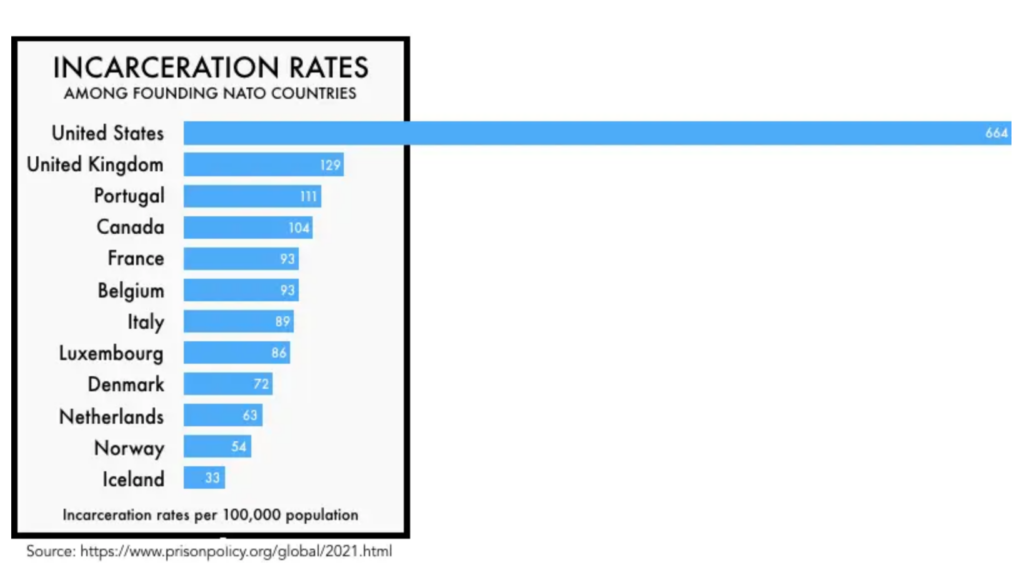Written By Hope Marshall, Criminal Justice Program Manager
Reentry is an important part of helping people released from prison get a second chance. Our prison and jail populations have decreased in the last 10 years. That’s a good thing! It also means we need a plan to help them stay out and off the streets.
The Reentry Landscape
So what does reentry look like in North Carolina?
- Prisons have specific programs and facilities focusing on successful reentry.
- The number of reentry councils across the state has grown from five to 17 with many others forming.
- Local funding has been established to support those with reentry needs.
- Housing created specifically for people reentering the community from jail or prison.
A Life-Changing Client
We can celebrate system improvements as we celebrate individual client successes. The focus on reentry reminds me of a client. Pearl was a woman in her late 40s with a long criminal record. She had already been to prison several times before I met her. During her intake we talked about her difficulties in finding employment and, even if she did get a job, how she couldn’t keep it. She did not finish high school and her work history was in fast food. She had tried marijuana and other drugs, but she always came back to alcohol. A few days after this intake interview, I went looking for her because she had missed a couple of appointments.
Looking for Pearl
I started at her home, down a long, dirt road, one lane in places. There were four or five mobile homes at the end by an old, vacant school building that was once the “colored school.” I knocked several times, but no one answered. I got back in my car and started back toward town, then I saw a figure coming toward me in the middle of the road dragging some type of bag. It turns out it was her purse. Pearl was drunk. She refused any help but accepted a ride to her home to go to bed. A day or so later we talked about treatment or detox, but she decided it wasn’t time yet.
Pearl was placed in custody for an unrelated charge at her next court hearing. I went to see her in the holding cell to let her know that she could come to see me across the street when she got out in a few weeks. Her husband, Maleek, Sr. and son, Maleek, Jr., were in the same jail so she was happy she could see them before she left.
I don’t know what happened to Maleek, Sr. as I never worked with him. Maleek, Jr. went to prison for selling marijuana and repeated probation violations. Pearl died in a house fire because she had been drinking and could not get out. But I will never forget her. She was my first client ever. The lessons her family taught me have stayed with me for the last almost 27 years.
Ending the Cycle
The cycle of poverty and homelessness grows from generation to generation. The lack of educational success often leads to low-wage jobs that cannot pay bills and come with no benefits or security. Substance use invades lives and takes over creating hopeless situations and making mental health conditions worse. Accessing services is next to impossible without some type of transportation. The issues in a rural county are the same issues in every other county in N.C.
Why We Need Reentry Services

Here in the United States, we have the highest prison population in the world. Those high numbers add up.
- At least 95% of those that enter prison will return home at some point.
- The recidivism rate is 70%. That means 70% of people who get out of prison are arrested again within five years.
- Up to 60% of those with a criminal record remain unemployed one year after release.
- When people get out of prison, they make 40% less than those working the same job but without a criminal record.
- The numbers in our state impact children, too. One in fourteen children here will experience having a parent incarcerated.
Mecklenburg County Reentry Services has been working with residents for 11 years. We partner with approximately 100 organizations to help clients find services and resources. Some of that includes:

- Employers becoming second chance employers and looking to hire reentering residents.
- Advocacy for housing. This has led to increased funding for transitional and permanent housing options.
And it’s working. A 2022 study showed that housing paired with these types of structured programming can reduce recidivism to 10% down from the average of 46%.
Their Reentry Success is Our Reentry Success
When a client is successful, the community is successful. Our Mecklenburg County reentry network is decreasing recidivism, reducing incarceration and healthcare costs and increasing public safety. Working together, sharing resources and advocating for our clients, we can change the narrative. Now this is something to celebrate!
